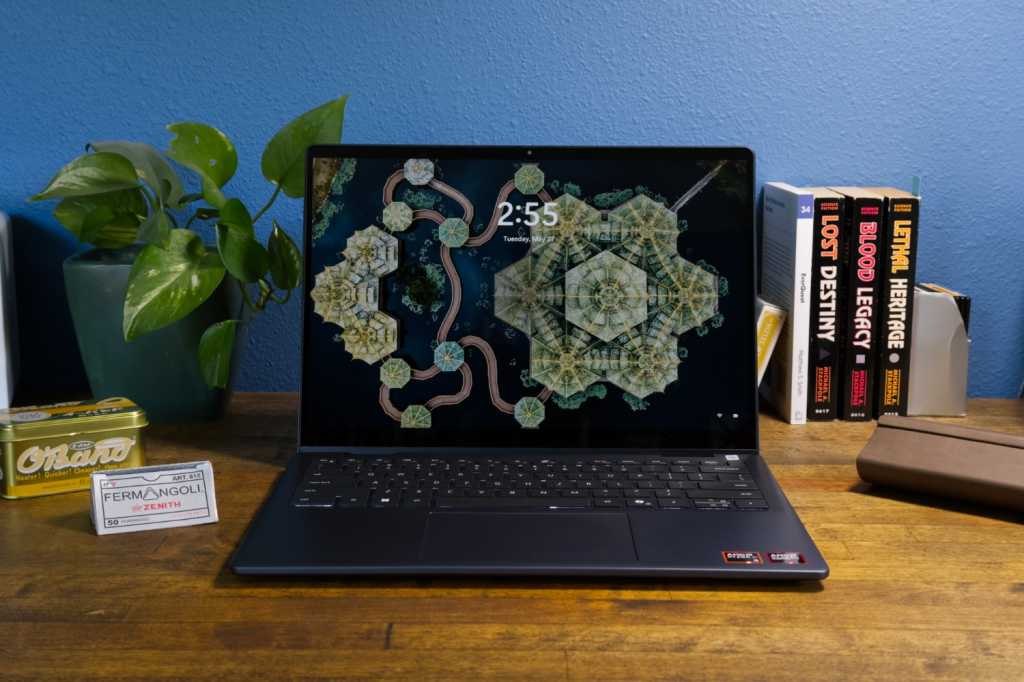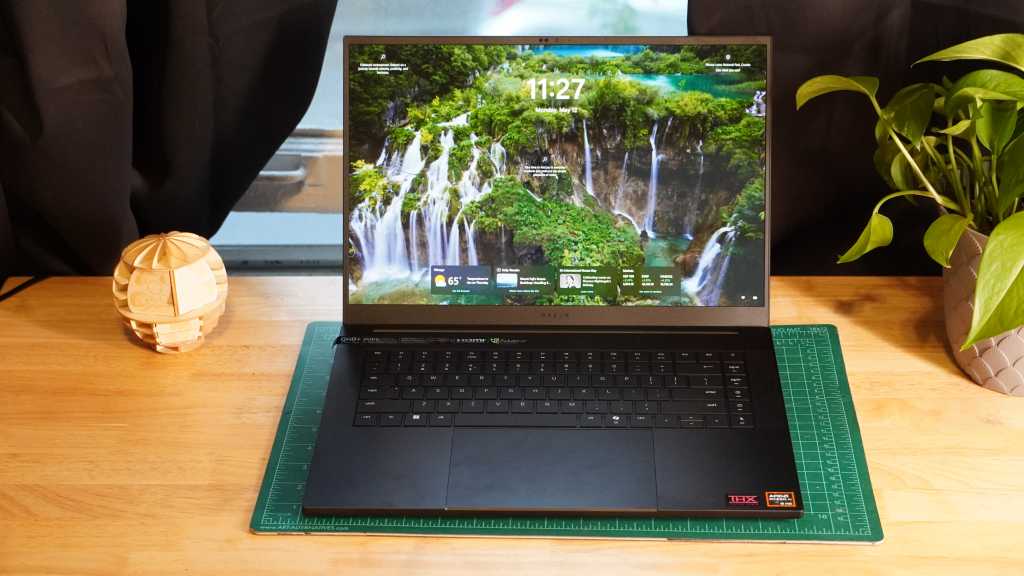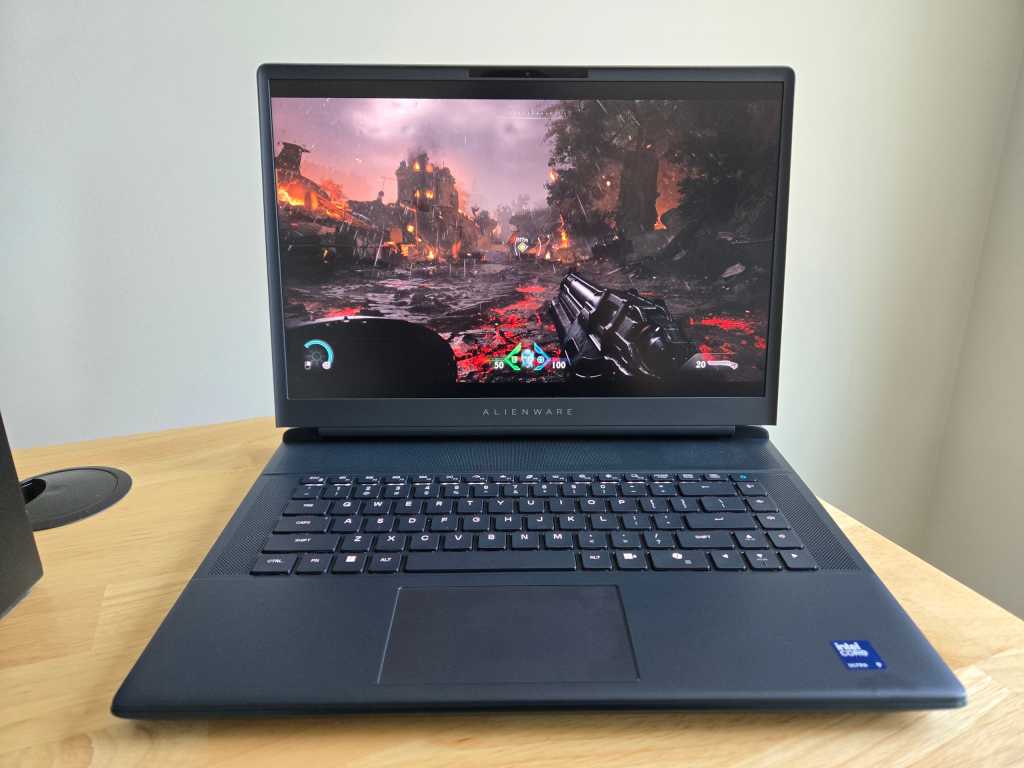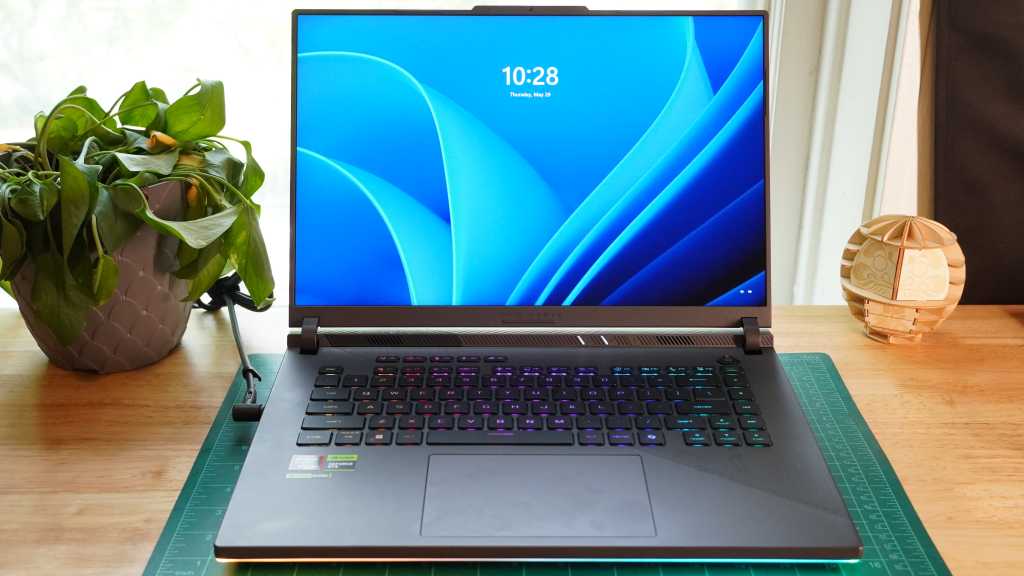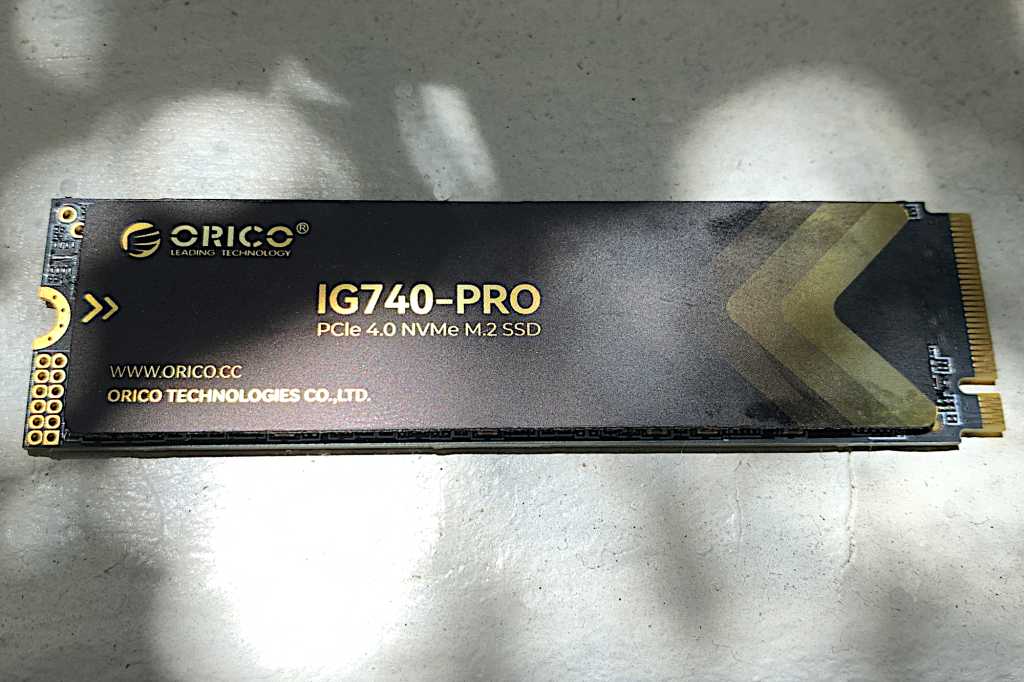The Lenovo Yoga 9i 2-in-1 Aura Edition emerges as a sophisticated 14-inch convertible laptop, powered by Intel’s innovative Lunar Lake processor. This device artfully blends a responsive touchscreen and a versatile 360-degree hinge with a substantial 32GB of RAM, a breathtaking OLED display, and the remarkable battery longevity characteristic of Intel’s Lunar Lake architecture. As a premium offering in the Yoga lineup, this model re-embraces the 2-in-1 convertible design that originally defined the Yoga brand, setting it apart from some recent Yoga-branded laptops. This review delves into the Lenovo Yoga 9i 2-in-1, a consumer-centric counterpart to the ThinkPad X1 2-in-1, sharing the same CPU but with a distinct aesthetic and an entertainment-optimized screen. With its promise of extended battery performance, a visually stunning display, and a sleek, modern feel, this machine aims to impress. We will explore its capabilities, design, and overall user experience to determine if it stands as a leading choice in the competitive 2-in-1 market.
Lenovo Yoga 9i 2-in-1: Specifications
The Lenovo Yoga 9i 2-in-1 Aura Edition represents a significant upgrade from the previous-generation Lenovo Yoga 9i (Gen 9). At its heart lies the Intel Core Ultra 7 258V, a Lunar Lake CPU that ushers in substantially improved battery life and the capability to run Copilot+ PC AI features, a feat beyond the reach of Intel’s older NPUs. Furthermore, it boasts a more potent integrated GPU, delivering surprisingly robust performance for an integrated solution. Complementing these are a generous 32GB of LPDDR5x RAM and a capacious 1TB PCIe Gen 4 SSD, ensuring smooth multitasking and ample storage. This combination of hardware positions the Yoga 9i 2-in-1 Aura Edition as a forward-looking device, well-suited for demanding users who prioritize both performance and advanced AI functionalities.
- Model: Lenovo Yoga 9i 2-in-1 Aura Edition
- CPU: Intel Core Ultra 7 258V
- Memory: 32 GB LPDDR5x RAM
- Graphics/GPU: Intel Arc 140V
- NPU: Intel AI Boost (up to 47 TOPS)
- Display: 14-inch 2880×1800 OLED display with variable refresh rate up to 120Hz and HDR
- Storage: 1 TB PCIe Gen 4 SSD
- Webcam: 5MP 1440p webcam
- Connectivity: 2x Thunderbolt 4 (USB Type-C), 1x USB Type-C (USB 20Gbps), 1x USB Type-A (USB 10Gbps), 1x combo audio jack
- Networking: Wi-Fi 7, Bluetooth 5.4
- Biometrics: Fingerprint reader, IR camera for facial recognition
- Battery capacity: 75 Watt-hours
- Dimensions: 12.44 x 8.66 x 0.63 inches
- Weight: 2.91 pounds
- MSRP: $1,749 as tested
This is a wonderful laptop for individuals seeking a sleek, portable 2-in-1 device equipped with a vivid display and exceptional battery life.
Lenovo Yoga 9i 2-in-1: Design and Build Quality
The design of the Lenovo Yoga 9i 2-in-1 Aura Edition will feel familiar to those who have encountered recent Lenovo Yoga machines. This particular Yoga laptop is finished in “Cosmic Blue,” a departure from the more business-oriented grayscale palette of Lenovo’s ThinkPad line. This color choice, combined with the gracefully rounded edges and the glossy, high-resolution OLED screen, contributes to a decidedly sleek and premium user experience. The blue hue is quite dark, appearing closer to black in many lighting conditions, yet it catches the light in an intriguing manner.
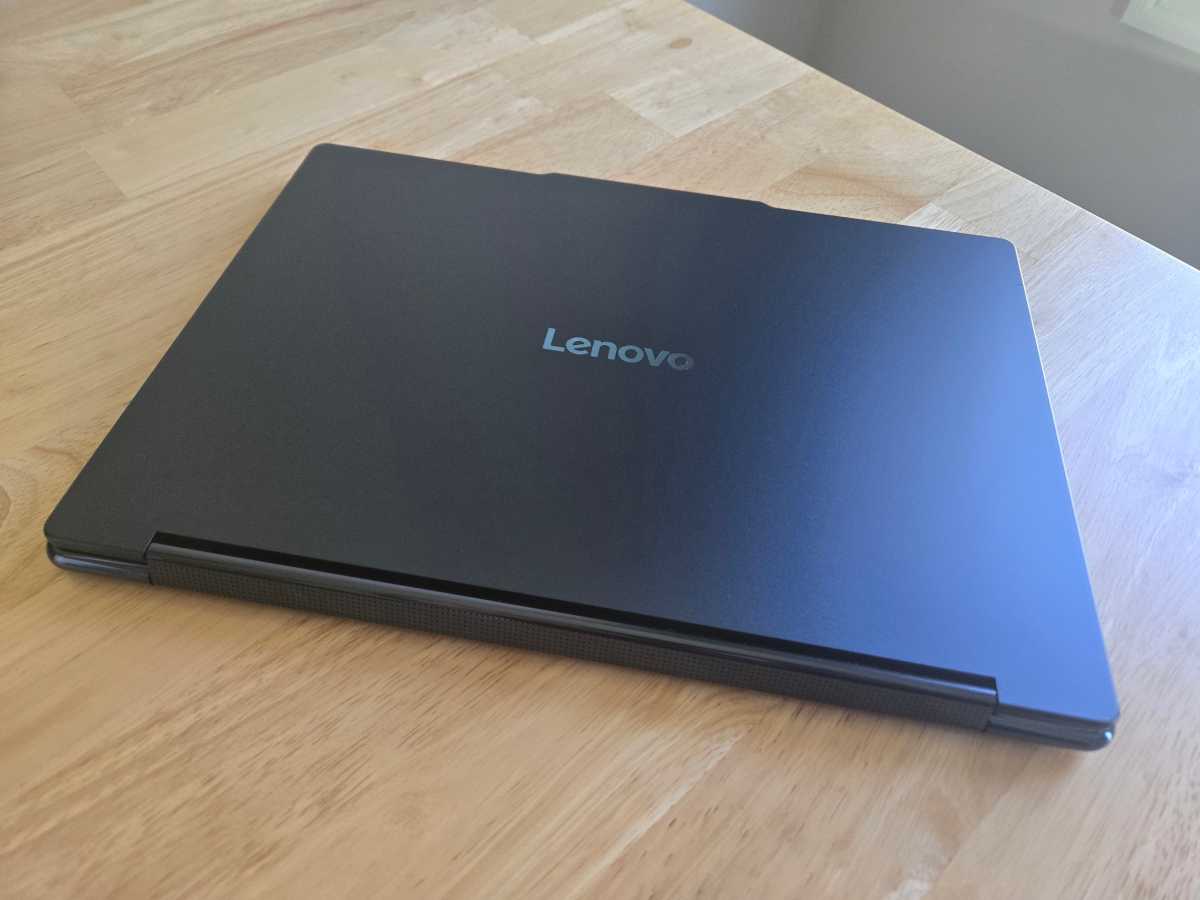 Angled view of the sleek Lenovo Yoga 9i 2-in-1 Aura Edition laptop showcasing its premium design and convertible form factor.
Angled view of the sleek Lenovo Yoga 9i 2-in-1 Aura Edition laptop showcasing its premium design and convertible form factor.
Constructed with aluminum for both the top and bottom panels, the build quality is commendably solid. This reflects Lenovo’s experience with the proven Yoga design; it’s not their first iteration of a chassis like this, bearing a strong resemblance to the Lenovo Yoga 9i (Gen 9), for instance. The 360-degree hinge operates smoothly and effectively. Notably, the hinge also incorporates what Lenovo terms a “rotating soundbar.”
There is no unwanted flex in the chassis, nor any undesirable movement of the display during typing or other interactions one would wish to avoid in a machine of this caliber. The design simply functions as intended. Weighing in at 2.91 pounds, it sits within the standard weight range for such a laptop—neither excessively heavy nor exceptionally light.
The pre-installed software is somewhat more cluttered than ideal. For example, McAfee antivirus prompts for a subscription right out of the box. While consumer laptops often come with more bundled offers than their business-focused counterparts, it feels a bit excessive for a laptop priced at $1,749. Nevertheless, this is a minor concern as unwanted software can be quickly uninstalled.
Lenovo Yoga 9i 2-in-1: Keyboard, Trackpad, and Pen
Typing on the Lenovo Yoga 9i 2-in-1’s keyboard is a comfortable experience. Lenovo highlights its “soft-landing” switches, which the company describes as offering a “snappy” feel, complemented by 1.5mm of key travel. The keyboard avoids any mushiness, and the switches provide a satisfying tactile response for a lightweight, portable laptop.
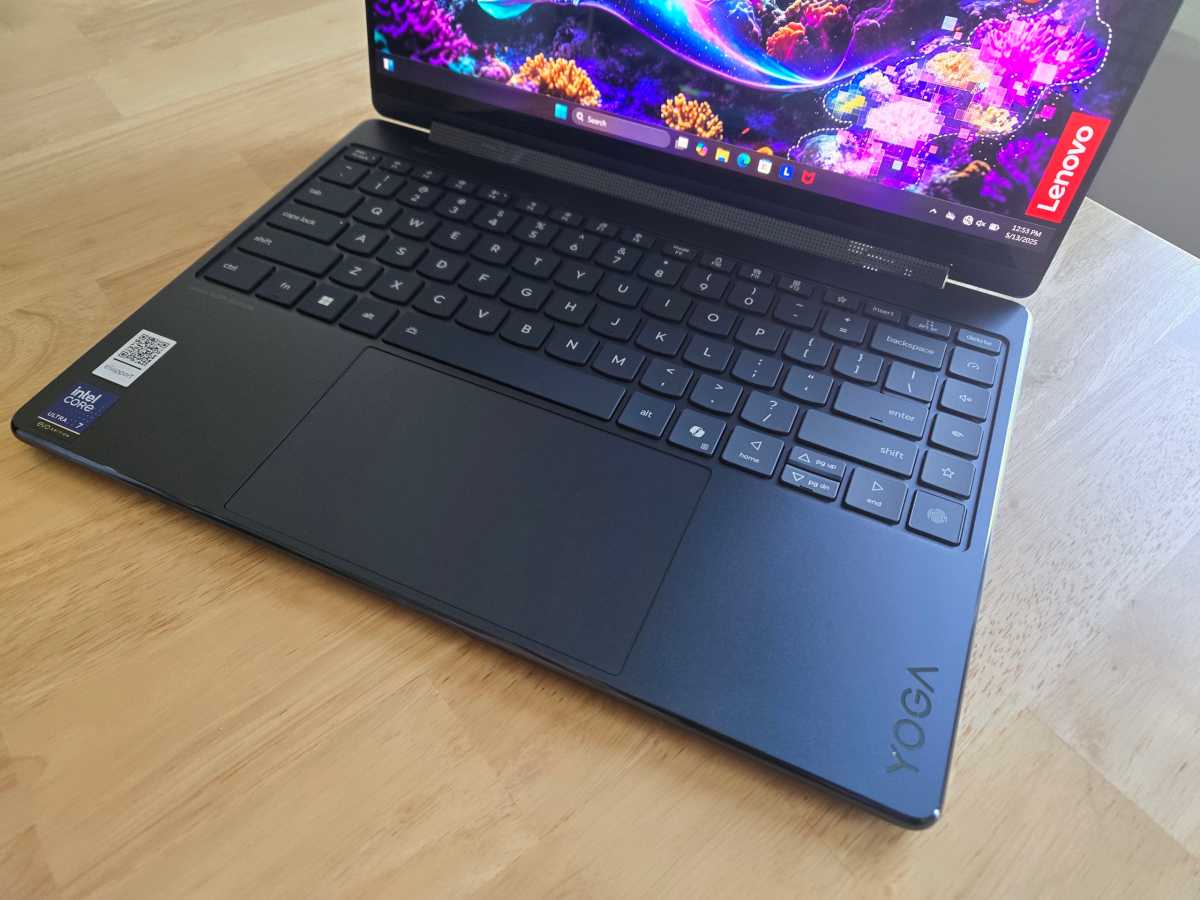 Close-up shot of the Lenovo Yoga 9i 2-in-1 keyboard and large trackpad, highlighting key travel and layout.
Close-up shot of the Lenovo Yoga 9i 2-in-1 keyboard and large trackpad, highlighting key travel and layout.
However, a familiar critique regarding Yoga keyboard layouts resurfaces. Lenovo has positioned the fingerprint reader in the bottom right corner of the laptop. For users whose fingers naturally gravitate to the bottom-right corner expecting the right arrow key, this placement can disrupt muscle memory. Interestingly, on the ThinkPad X1 2-in-1, Lenovo placed the fingerprint reader to the left of the arrow keys, suggesting this particular layout choice is specific to Yoga laptops.
While users will likely adapt to this layout over time—and if this machine is intended for long-term, frequent use, it may become a non-issue—it’s a point worth noting.
The trackpad feels pleasantly smooth and is generously sized. Clicks are registered with a fine, non-mushy action. While a personal preference leans towards haptic trackpads in laptops of this class, this mechanical trackpad is certainly well-executed.
Lenovo also includes a Yoga Pen, which magnetically attaches to the top of the laptop’s lid, just below the camera bump. This active pen charges via USB-C. It performs well for drawing and note-taking on the laptop’s display, offering a valuable experience for those seeking pen input on a consumer-grade convertible with a 360-degree hinge.
Lenovo Yoga 9i 2-in-1: Display and Speakers
The Lenovo Yoga 9i 2-in-1 features an excellent 14-inch OLED touchscreen display. It is clearly designed to impress, boasting a sharp 2880×1800 resolution, HDR support, and the characteristically vivid colors that OLED panels are renowned for. The screen surface is glossy, contrasting with the matte finish found on the business-focused ThinkPad X1 2-in-1. This choice underscores the Yoga 9i’s emphasis on delivering the most beautiful screen possible for media consumption, whereas the ThinkPad’s anti-glare display is optimized for readability across diverse lighting conditions. This is always a trade-off when selecting a laptop.
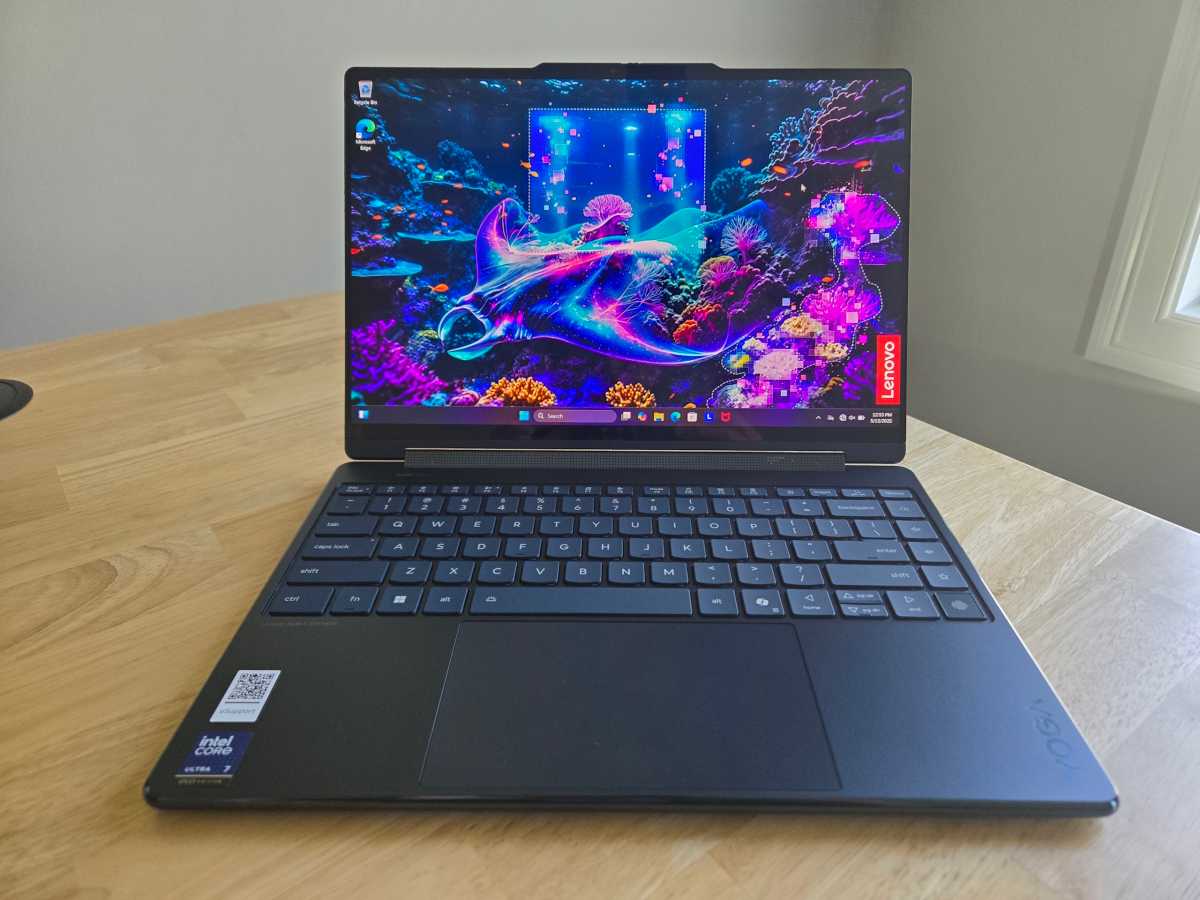 Lenovo Yoga 9i 2-in-1 Aura Edition in tent mode displaying a vibrant image on its 14-inch OLED screen.
Lenovo Yoga 9i 2-in-1 Aura Edition in tent mode displaying a vibrant image on its 14-inch OLED screen.
To be clear, the screen glare observed is not unusual; it is a common characteristic of glossy OLED displays in harsh lighting.
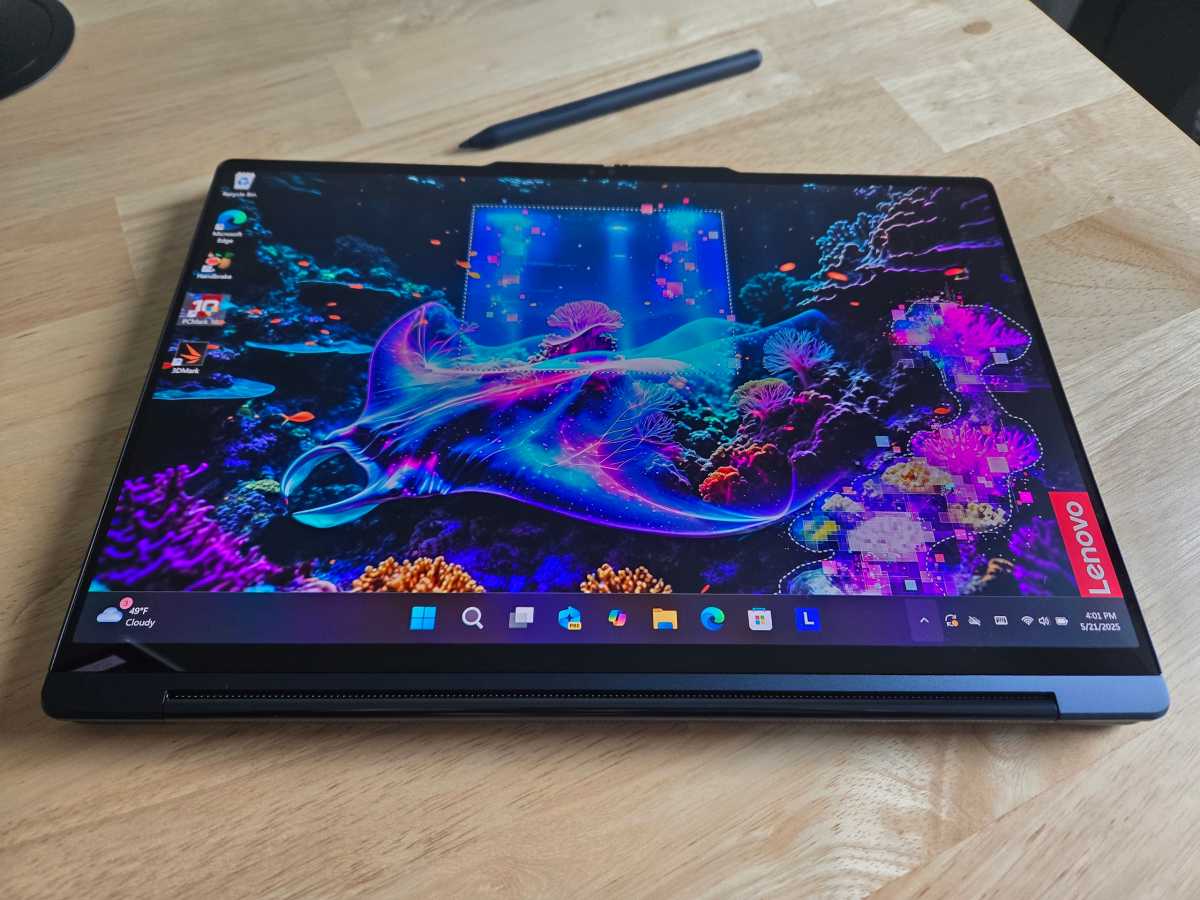 The Lenovo Yoga 9i 2-in-1 laid flat in tablet mode with the Yoga Pen resting on its screen, demonstrating touch and pen input.
The Lenovo Yoga 9i 2-in-1 laid flat in tablet mode with the Yoga Pen resting on its screen, demonstrating touch and pen input.
The display on the Lenovo Yoga 2-in-1 can reach a maximum refresh rate of 120Hz, but it also incorporates a variable refresh rate. This feature likely contributes significantly to Lenovo’s ability to extract extended battery life from the system. Indeed, perhaps the most impressive aspect of the display is that Lenovo has managed to achieve such long battery life despite a screen that feels like it should be power-hungry. The Intel Lunar Lake processor is a key enabler, but the variable refresh rate of the display and the larger battery integrated into the laptop are likely the crucial elements that complete this efficiency puzzle.
Lenovo places considerable emphasis on the rotating soundbar, stating it “allows the device to project audio independent of the device’s orientation.” This soundbar houses two tweeters that rotate with the screen, while the laptop also features two woofers on its underside. The overall speaker setup sounds quite good. Listening to Steely Dan’s “Aja” on Spotify—a classic audiophile test track—the sound was clear and detailed. Switching to Daft Punk’s “Get Lucky” for a more electronic sound with pronounced bass, the audio was punchy and enjoyable, though naturally without the deep bass response one would expect from high-quality headphones or external speakers.
Lenovo Yoga 9i 2-in-1: Webcam, Microphone, and Biometrics
The Lenovo Yoga 9i 2-in-1 is equipped with a 5MP webcam capable of a 1440p resolution. On paper, this sounds impressive, and in practice, it looks high-quality too, delivering a clear picture. In fact, it stands out as one of the better webcams encountered on a laptop, even when compared to webcams on some business-oriented laptops reviewed. The quality is more than sufficient for video meetings and calls.
Lenovo has also thoughtfully included a physical privacy shutter, allowing users to block the webcam by sliding a switch located directly above it. Such features are always a welcome addition for enhanced security and peace of mind.
The microphone array captures clean, clear audio and demonstrates good noise cancellation, even in a room with the whirring fans of a desktop PC. To my ears, it may be one of the superior microphone setups tested in a laptop recently. Considering that the Yoga line primarily targets consumers, the performance of both the webcam and microphone is particularly commendable.
For biometric authentication, the Lenovo Yoga 9i 2-in-1 offers a fingerprint reader situated at the bottom-right corner of the keyboard and an IR camera integrated into the camera bar above the display. Users can sign in with Windows Hello using either their fingerprint or facial recognition, and both methods function reliably and swiftly.
Lenovo Yoga 9i 2-in-1: Connectivity
The Lenovo Yoga 9i 2-in-1 doesn’t offer the most extensive selection of ports, but it’s a reasonable array for its class. On the left side of the chassis, you will find one USB Type-C port (supporting USB 20Gbps) and one USB Type-A port (supporting USB 10Gbps).
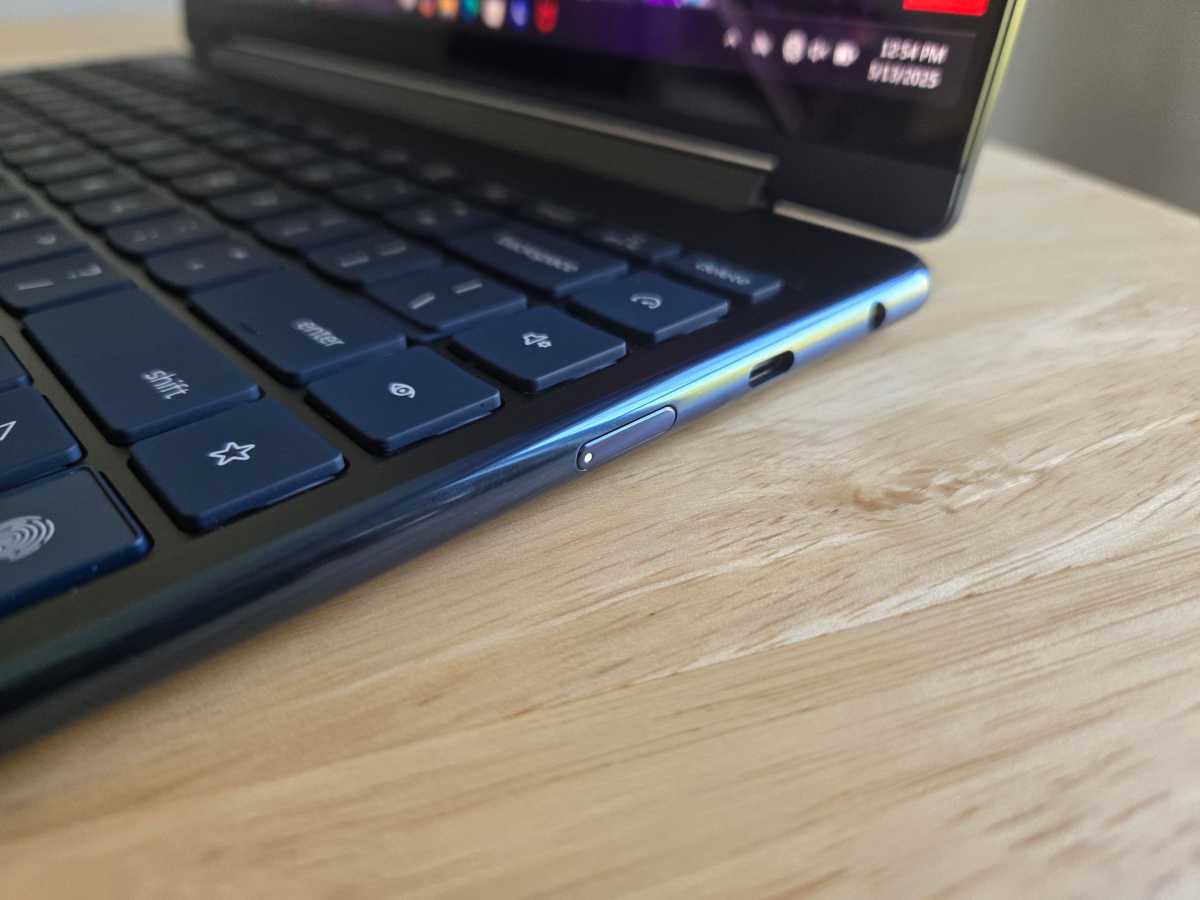 Side view of the Lenovo Yoga 9i 2-in-1 detailing its array of connectivity ports including Thunderbolt 4 and USB-A.
Side view of the Lenovo Yoga 9i 2-in-1 detailing its array of connectivity ports including Thunderbolt 4 and USB-A.
The right side houses two Thunderbolt 4 ports (USB 40Gbps) and a combination audio jack. As this laptop charges via USB-C, the included charger will connect to one of these USB Type-C ports.
Users requiring an HDMI out port, a microSD card reader, or a second USB Type-A port will need to consider other options or rely on dongles. For instance, the business-focused ThinkPad X1 2-in-1 includes a built-in HDMI out port. However, for a portable laptop of this nature, the provided port selection is not too restrictive, particularly if you are prepared to use a dongle for occasional expanded connectivity needs.
It’s pleasing to see Lenovo include a headphone jack on this machine, a feature that is not always guaranteed, as evidenced by a similarly named Lunar Lake-powered Yoga laptop reviewed previously, the Yoga Slim 9i, which lacked one.
Thanks to the Intel Lunar Lake platform, this machine also comes standard with Wi-Fi 7 and Bluetooth 5.4. It is imperative that these modern wireless standards become standard features for new laptops, ensuring future-proof connectivity.
Lenovo Yoga 9i 2-in-1: Performance
The Lenovo Yoga 9i 2-in-1 delivers snappy desktop performance, attributable to its Intel Core Ultra 7 258V CPU. The Lunar Lake architecture performs well for day-to-day productivity applications and, crucially, offers extremely long battery life. Additionally, it provides surprisingly good graphics performance for integrated graphics hardware.
As is customary, we subjected the Lenovo Yoga 9i 2-in-1 to our standard suite of benchmarks to objectively assess its performance characteristics.
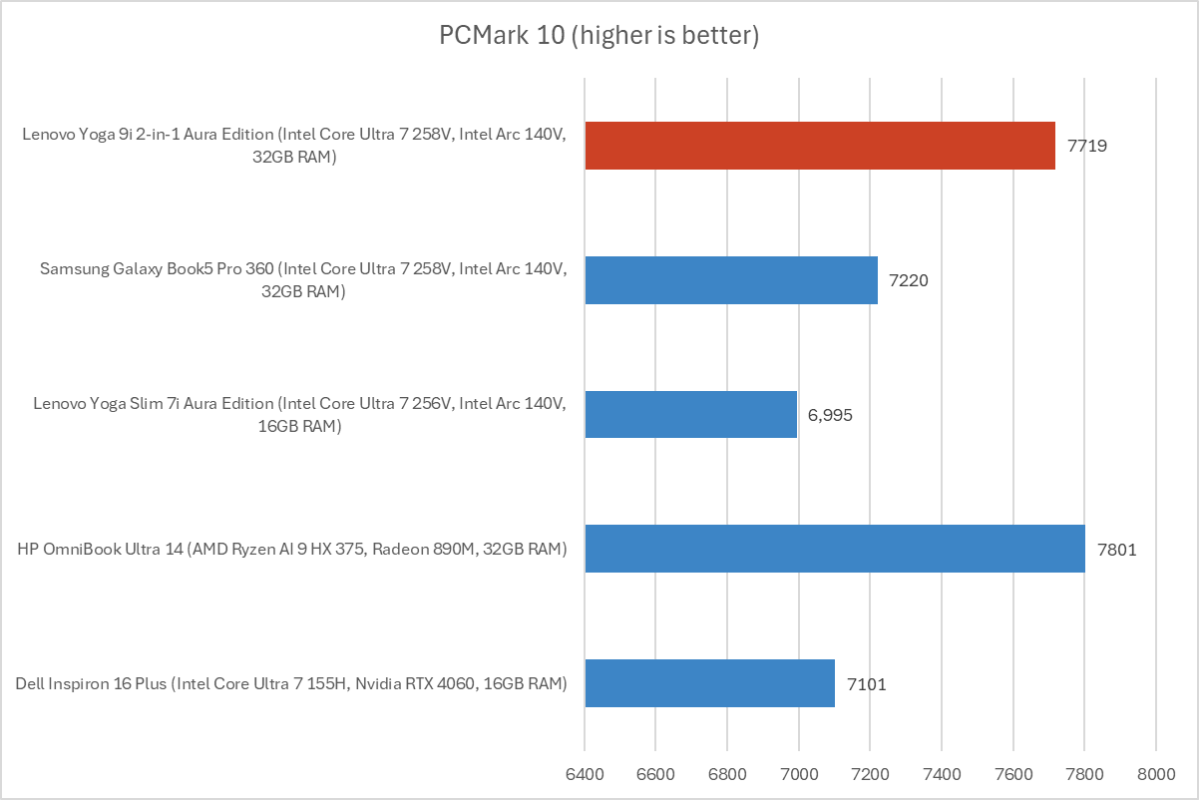 Graph showing PCMark 10 benchmark results for the Lenovo Yoga 9i 2-in-1, indicating overall system performance.
Graph showing PCMark 10 benchmark results for the Lenovo Yoga 9i 2-in-1, indicating overall system performance.
First, we ran PCMark 10 to gain an understanding of overall system performance. With an overall PCMark 10 score of 7,719, the Lenovo Yoga 9i 2-in-1 appears to extract nearly all available performance from the Lunar Lake hardware. Our testing methodology involves evaluating laptops in their default state with minimal tweaking—mimicking how a typical PC user would experience them. It’s likely that recent changes in Windows 11, which automatically place laptops into a higher-performance state when plugged in, contributed to this machine’s strong showing in the benchmarks.
 Bar chart displaying Cinebench R20 multithreaded CPU benchmark scores for the Lenovo Yoga 9i 2-in-1.
Bar chart displaying Cinebench R20 multithreaded CPU benchmark scores for the Lenovo Yoga 9i 2-in-1.
Next, we ran Cinebench R20. This test is a heavily multithreaded benchmark focusing on raw CPU performance. It’s a relatively quick benchmark, so cooling under sustained workloads is not a primary factor. However, due to its heavily multithreaded nature, CPUs with a higher core count have a significant advantage.
With a multithreaded Cinebench R20 score of 4,306, Intel’s Lunar Lake hardware reveals its most notable weakness. Possessing fewer CPU cores, it is not only substantially slower in multithreaded CPU workloads compared to AMD’s Ryzen AI 300 series hardware (which also features an NPU and can run Copilot+ PC AI features), but it is also considerably slower than Intel’s own previous-generation Meteor Lake chips. While Lunar Lake offers superior battery life compared to its competitors, this advantage comes at a cost in multithreaded throughput.
This benchmark result is not entirely representative of real-world productivity application usage, which is a positive, but it will be a concern for users with workloads that are heavily reliant on multithreaded CPU performance.
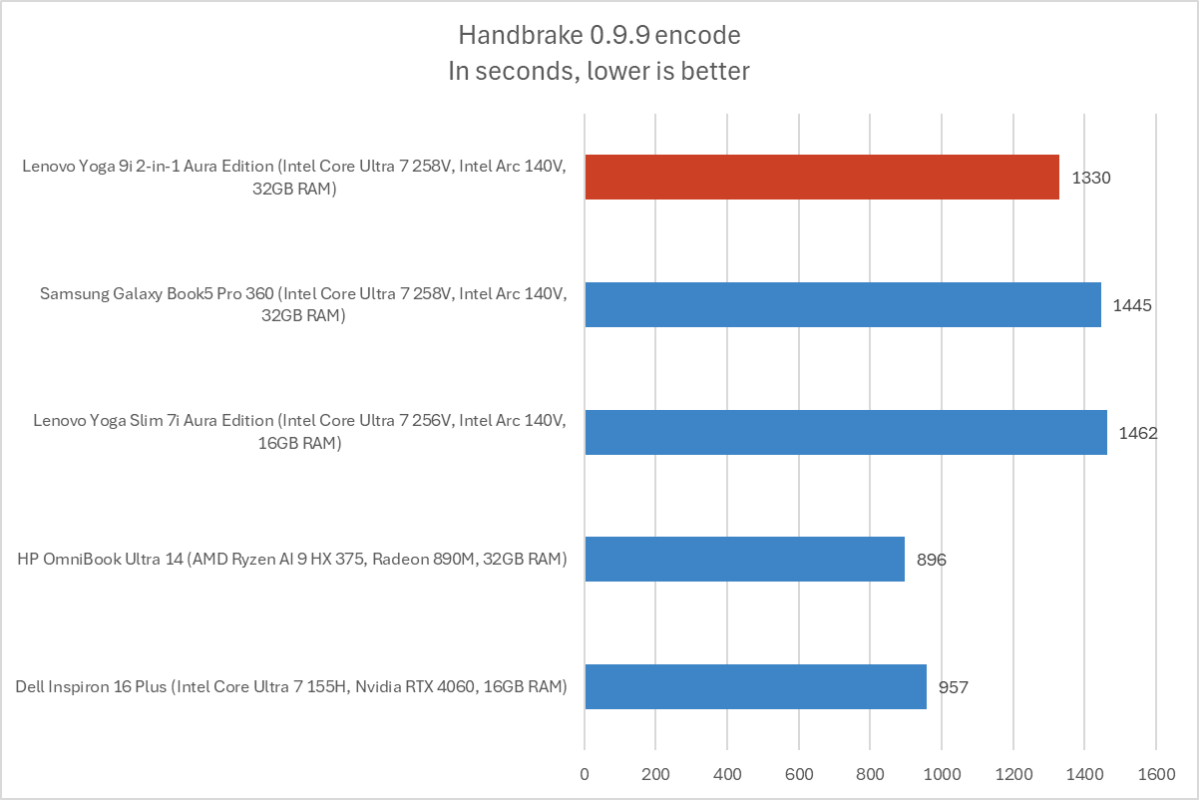 Handbrake video encoding benchmark results for the Lenovo Yoga 9i 2-in-1, measuring extended CPU workload performance.
Handbrake video encoding benchmark results for the Lenovo Yoga 9i 2-in-1, measuring extended CPU workload performance.
We also conducted an encode using Handbrake. This test is another heavily multithreaded benchmark, but it runs over an extended period, demanding effective cooling as many laptops will throttle and slow down under sustained load.
The Lenovo Yoga 9i completed the encode process in an average of 1,414 seconds, which is approximately 23 and a half minutes. Again, multithreaded CPU performance emerges as a weakness in this scenario.
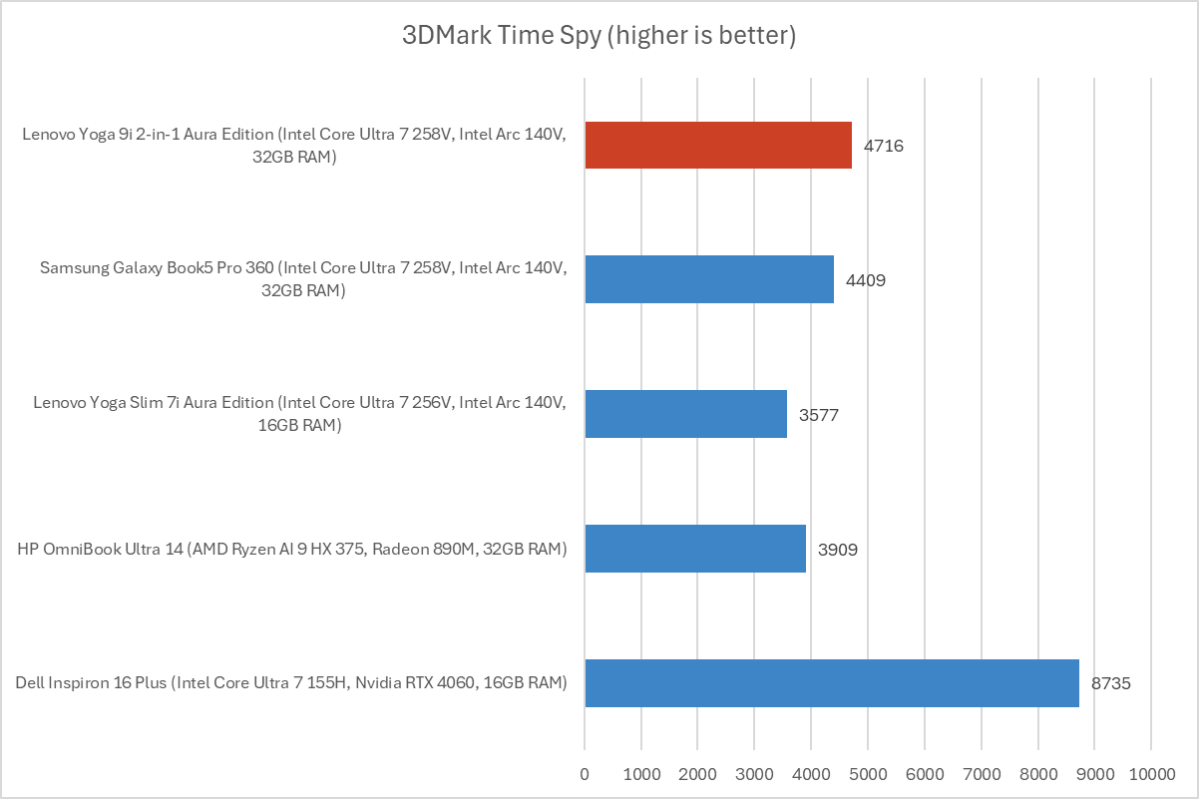 3DMark Time Spy graphics benchmark scores for the Lenovo Yoga 9i 2-in-1 with Intel Arc 140V graphics.
3DMark Time Spy graphics benchmark scores for the Lenovo Yoga 9i 2-in-1 with Intel Arc 140V graphics.
Next, we proceeded to a graphical benchmark. While this is not a gaming laptop, it is still beneficial to assess the GPU’s performance. We ran 3DMark Time Spy, a graphical benchmark that specifically focuses on GPU capabilities.
With a 3DMark Time Spy score of 4,716, Lunar Lake delivers excellent graphics performance for an integrated solution—second only to laptops equipped with discrete Nvidia or AMD graphics hardware.
Overall, this machine delivers solid performance. It showcases Lunar Lake operating at its peak potential. However, it also contends with Lunar Lake’s less-than-ideal multithreaded performance, a consequence of Intel including fewer cores on Lunar Lake compared to the last-generation Meteor Lake hardware. This is only a significant concern if your workflows demand sustained multithreaded performance, but it’s an important consideration for a laptop priced at $1,749.
Lenovo Yoga 9i 2-in-1: Battery Life
The Lenovo Yoga 9i 2-in-1 combines a substantial 75 watt-hour battery with the power-efficient Lunar Lake hardware, leading to high expectations for its battery life. Indeed, it delivers—the endurance is very impressive.
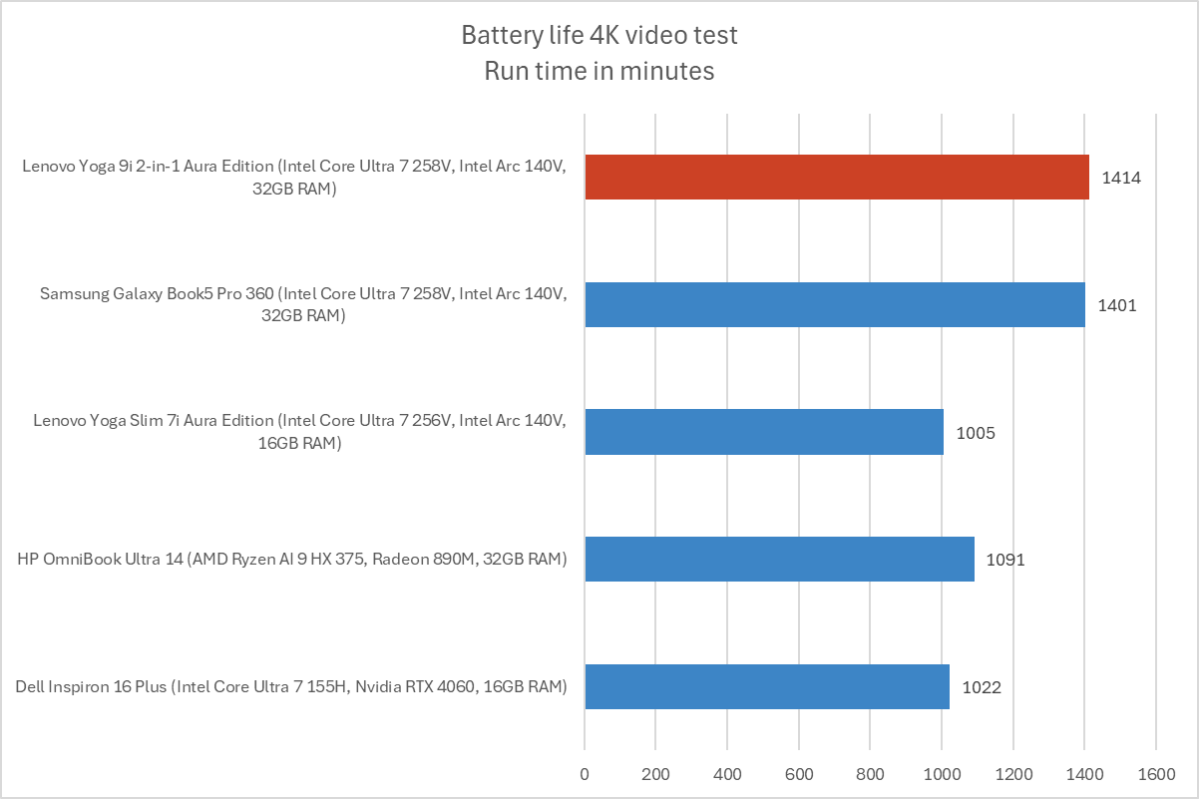 Graph illustrating the impressive battery life of the Lenovo Yoga 9i 2-in-1 in a 4K video playback test.
Graph illustrating the impressive battery life of the Lenovo Yoga 9i 2-in-1 in a 4K video playback test.
To benchmark the battery life, we play a 4K copy of Tears of Steel on repeat in Windows 11 with airplane mode enabled until the laptop suspends itself. For our battery benchmarks, the screen is set to 250 nits of brightness. It’s worth noting that the Lenovo Yoga 9i 2-in-1’s OLED display has a slight advantage in this test, as OLED screens consume less power when displaying the black bars around the video content. This scenario represents a best-case for any laptop, as local video playback is highly efficient, and real-world battery life during day-to-day use will invariably be less than this benchmark figure.
The Lenovo Yoga 9i lasted for an impressive 1414 minutes before suspending itself—that’s 23 and a half hours. While the OLED display almost certainly consumes more power than an LCD equivalent under certain conditions, the strategic choice of a variable refresh rate for the display, coupled with the larger battery capacity, helps this machine achieve extremely long battery life.
Lenovo Yoga 9i 2-in-1: Conclusion
The Lenovo Yoga 9i 2-in-1 Aura Edition stands out as a sleek and sophisticated machine, distinguished by its beautiful OLED display and exceptional battery life. The 2-in-1 convertible experience it offers is excellent, living up to the premium impression conveyed by its design and aesthetics. It is, in essence, as appealing in person as it appears in photographs.
However, certain drawbacks are evident. The glossy screen, while vibrant, may not be ideal for use in brightly lit environments due to reflections. The relatively lower multithreaded CPU performance, a characteristic of the current Lunar Lake implementation, might impede workflows for users with demanding, CPU-intensive tasks. Additionally, the placement of the fingerprint reader to the right of the arrow keys could be an ergonomic adjustment for some. The primary concern, though, is its price point. At $1,749, this positions the Yoga 9i 2-in-1 Aura Edition firmly in the premium-priced segment for a consumer laptop, though its high-quality 2-in-1 nature does contribute to this valuation.
Ultimately, this is a wonderful laptop for individuals specifically looking for a sleek, highly portable 2-in-1 device that excels with a vivid display and truly remarkable battery life. If these are your top priorities, and the price aligns with your budget, then the Lenovo Yoga 9i 2-in-1 Aura Edition is a great machine worthy of strong consideration.





